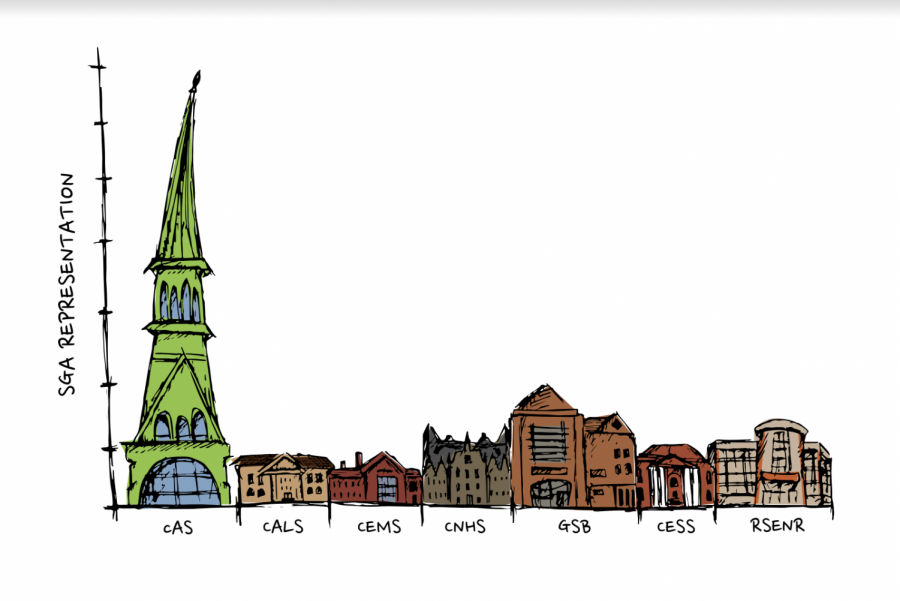Perspectives: SGA needs more academic representation across the colleges
March 23, 2021
The Student Government Association claims to represent all students and I do believe that some Senators do but at its core are structural challenges that prevent SGA from being actually representative.
Currently, the SGA is made up of 42 Senators elected by popular election by the entire student body. If you add the President and Vice President, who are elected in the same manner, then it gets to 44 total people representing their peers. With the Senators’ election just being a blank slate of 40-50 names on a ballot and the top 42 winning with almost no effort put in.
But, the problem with this is that there are no safeguards to prevent over-representation or under-representation by a specific population.
For instance, in my time as SGA Vice President, the College of Arts & Sciences was always significantly overrepresented and CNHS, CESS, and CEMS very under-represented. In fact, at one point in the year, the Academic Affairs Committee was made up of 3 CAS students, a Grossman student, and a CALS student.
How can the Academic Affairs committee represent and understand academics at UVM, without representation from each college?
To exhibit just how skewed the representation was, here are the numbers (according to my notes) from last year during the spring semester.
CAS: 22
CALS: 3
CEMS: 2
CNHS: 1
GSB: 5
CESS: 0
RSENR: 6
There are many solutions to this problem and many ways we can draw plans to represent people. There is likely no perfect solution to have every UVM student evenly represented in some way. But, I can propose one that I have advocated for many times and would be a simple starting place.
I would propose to reconfigure the SGA to have Senate seats based on colleges’ enrollments. Instead of having the entire student body voting for every Senator, each student would only vote for their own college’s Senators.
This would not only make it easier to get to know the candidates but also could lead to more competitive elections.
Using Fall 2020 numbers, below are the distribution of Senate seats if they were distributed based on college enrollments. They are rounded to the nearest whole number.
CAS: 17
CALS: 6
CEMS: 5
CNHS: 4
GSB: 3
CESS: 3
RSENR: 3
Left Over: 1
Now this is, of course, imperfect. Numbers aren’t always the best way to represent actual people. Other scenarios could include 10 or so at-large seats either determined by class or the entire student body. While this would decrease exact representation by colleges, it would increase equal representation of each class year.
These ideas aren’t new to our SGA either, in the past there was a significant lack of representation of off-campus students. A rule was put into place to ensure that at least a small percentage of students lived off-campus. Although this has been less relevant in recent years as about half all students live off-campus.
This idea, of dividing academically, isn’t new to UVM, the Graduate Student Senate and the Faculty Senate are already divided by academic departments. Although, I think representation from every single academic department would be challenging for undergraduates.
Of course any way that you cut this plan, you are going to leave people out. For instance how can commuter students be equally represented, students of color, or international students?
Any system put into place will inherently have challenges, but any system of real representation is a whole lot better than what we have now.







